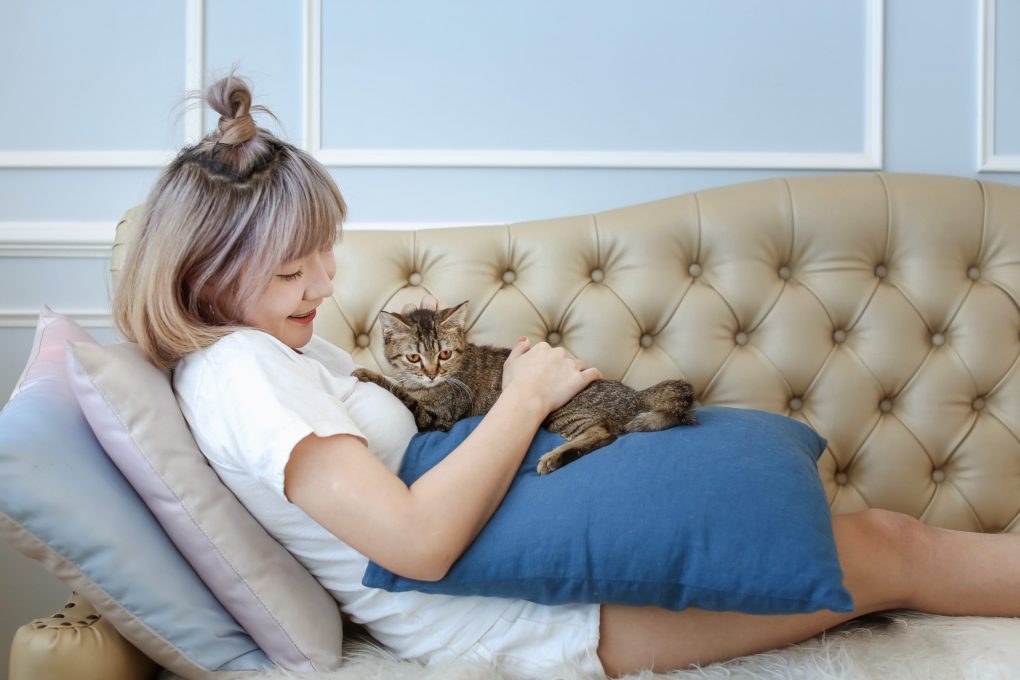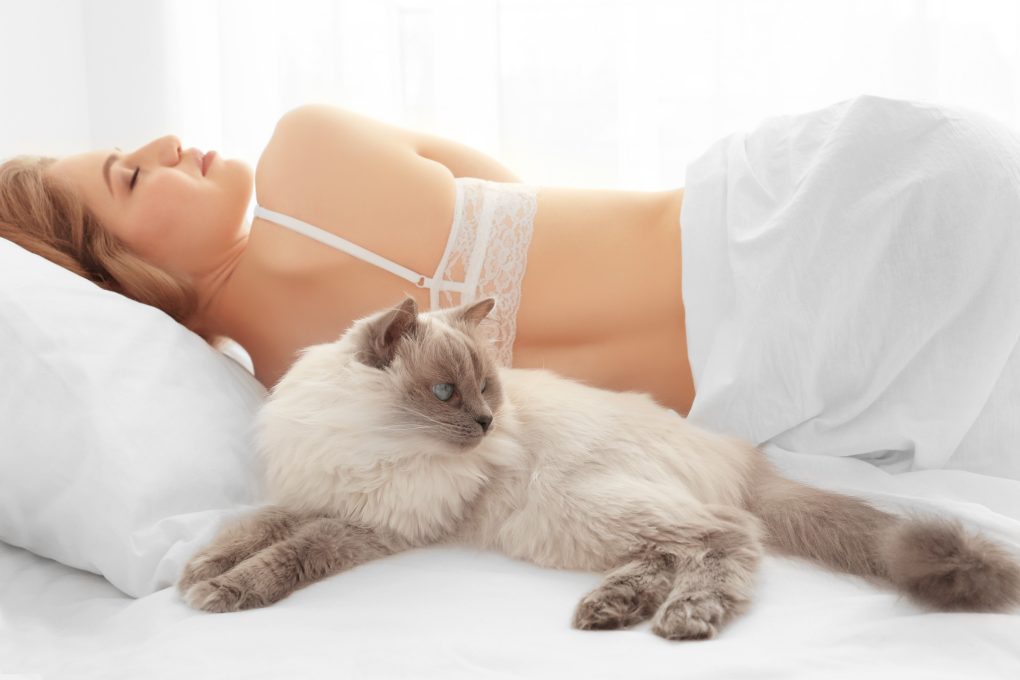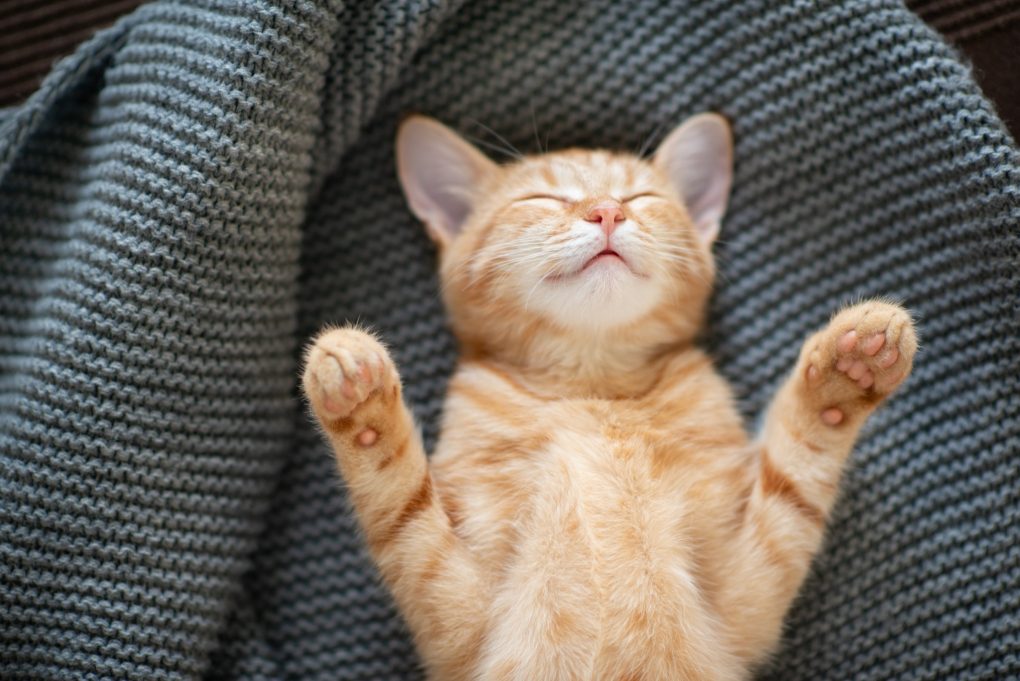How to Know if Your Cat Loves You: How Cats Express Affection
When a cat purrs, it usually means they feel comfortable and relaxed, and it may even use it to self-soothe. However, cats may also purr when stressed or in pain, so it’s important to consider the context and other signals your cat gives off. Overall, purring is a positive sign that your cat is feeling calm and happy, and it’s often a way for them to express affection towards their owners.
Table of Contents
Signs Cat Loves You


Kneading
Kneading is commonly seen in cats, in which they rhythmically push their paws in and out against a soft surface, such as a blanket or your lap. This behavior is often a sign of contentment and relaxation, indicating that your cat feels comfortable and happy.
Kneading is a natural behavior that kittens display when nursing from their mother. The motion helps stimulate milk flow, and as a result, many cats continue to knead well into adulthood to self-soothe and comfort themselves.
Head-Bumping
Head-bumping is a behavior commonly seen in cats that shows affection and trust. When a cat head-bumps you, they are essentially marking you with its scent glands, which are located on its forehead, cheeks, and chin. By rubbing its head against you, your cat transfers their scent onto you, claiming you as part of its social group.
Cats also head-bump to greet and show affection towards their favorite humans. It’s a way of saying hello and indicating they want your attention and affection. Head-bumping can be a gentle or firm nudge, and it may be accompanied by purring or meowing.
Licking
Licking is a common behavior in cats and can have different meanings depending on the context. For example, when a cat licks you, it is a sign of affection and trust. Cats may also lick themselves or other cats to groom and show care.
When your cat licks you, they essentially groom you, a sign of affection and trust. It’s a way for them to show you they feel comfortable and safe around you. Some cats may also lick their owners to seek attention or express their desire for food or play.
However, if your cat licks excessively, it may indicate an underlying health issue or stress. Cats may also lick themselves or objects as a way of self-soothing, particularly if they feel anxious or stressed. For example, if you notice excessive licking in your cat, it’s a good idea to consult your veterinarian to rule out any underlying medical or behavioral problems.
Following You Around
If your cat follows you, it’s generally a good sign that they feel comfortable and safe around you and enjoy your company. Cats are curious creatures and like to explore their environment, but if they stick close to you, it’s a sign that they consider you a part of their social group.


Cats may follow their owners around for several reasons. First, they may want attention or affection or be curious about your actions. For example, some cats may follow their owners into the bathroom or other private areas to stay close to them.
Following you around can also be a sign of attachment and loyalty. Cats are known for being independent but can also form strong bonds with their owners and become very attached to them.
Bringing You Gifts
Cats are natural hunters, and if they bring you “gifts” such as mice, birds, or other small animals, it’s a sign that they are displaying their natural hunting instincts and may be trying to share their success with you. However, as a pet owner, it’s important to remember that this behavior is natural for cats but can also be unpleasant for humans.
If your cat brings you gifts, it’s a sign that they feel comfortable and safe around you and consider you part of their social group. It’s a way for them to show affection and bring you something they believe you will appreciate.
However, it’s important to note that some cats may bring their owner’s gifts because they are hungry or trying to get attention. So, for example, if your cat is bringing you many gifts, it may be a sign that they need more food or attention or may be bored.
Slow Blinking
Slow blinking is a behavior that cats display when they are feeling relaxed and comfortable in their environment, according to the Nebraska Humane Society. It’s a sign that your cat is feeling calm, happy, and content. It’s often considered a sign of trust and affection.
When a cat looks directly at you and slowly blinks, it communicates that they are not feeling threatened and trust you. It’s also a sign that they feel relaxed and content in your presence.
Try slowly blinking at them if you want to bond with your cat. Slowly blinking at your cat is a way of communicating that you are not a threat and that you trust them. It can help to build a bond of mutual trust and affection between you and your cat.
Showing Their Belly


When a cat shows its belly, it’s generally a sign that they feel comfortable and relaxed around you. However, contrary to popular belief, a cat showing its belly doesn’t necessarily mean that they want to be petted or rubbed on its belly.
Cats typically show their belly as a way of communicating that they are feeling relaxed and not threatened. By exposing their vulnerable belly, they are essentially indicating that they trust you and feel safe in your presence.
However, some cats may not like to be touched on their belly or may become defensive if you try to pet them in that area. So if you want to pet your cat when they show their belly, it’s important to approach them slowly and gently and to let them guide you on where they want to be petted.
Tail Language
Cats use their tails to communicate a wide range of emotions and behaviors. For example, a relaxed tail held low or curled around the body indicates that your cat feels calm and content. If your cat’s tail is puffed up, it’s a sign that they are feeling scared or threatened. They may also hiss, growl, or arch their back.
A twitching tail indicates your cat is excited, agitated, or annoyed. They may also flick their tail rapidly if they are about to pounce on prey. A straight, erect tail indicates that your cat feels confident and alert. They may also twitch the tip of their tail slightly. A curved or hooked tail indicates your cat is feeling playful or curious. They may use their tail to signal their intentions when stalking prey or playing with toys.
